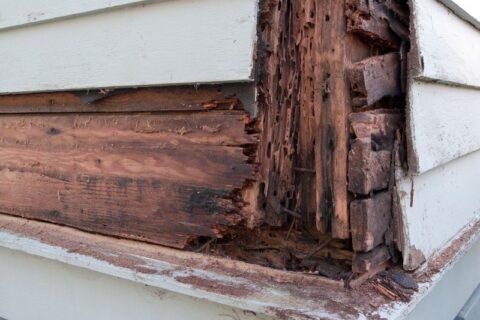
Constructing a home is a significant investment, and protecting it from the threat of termites is essential for long-term durability and value. One effective approach to termite prevention is selecting building materials that are naturally resistant to termite infestations. In this blog post, we'll explore the benefits of termite-resistant building materials and provide guidance for homeowners and builders looking to construct termite-resistant structures.
Understanding Termite-Resistant Building Materials:
Pressure-Treated Wood: Pressure-treated wood is infused with preservatives that deter termites and decay, making it an excellent choice for structural components such as posts, beams, and joists. Treated lumber is widely available and provides long-lasting protection against termite damage.
Redwood and Cedar: Redwood and cedar are naturally resistant to termites due to their high levels of natural oils and tannins. These woods are commonly used for outdoor applications such as siding, decking, and fencing, offering both aesthetic appeal and termite resistance.
Composite Materials: Composite building materials, such as fiber cement siding and composite decking, offer the look of wood without the vulnerability to termites. These materials are made from a combination of wood fibers and synthetic resins, providing durability and resistance to pests and decay.
Steel and Concrete: Steel and concrete are inherently resistant to termite infestations, making them ideal choices for structural elements like foundations, walls, and slabs. These materials offer unparalleled strength and durability, with the added benefit of termite resistance.
Benefits of Termite-Resistant Building Materials:
Long-Term Protection:
Benefits of Termite-Resistant Building Materials: By incorporating termite-resistant building materials into Repairs projects, homeowners can enjoy long-term protection against termite infestations. These materials deter termites and reduce the risk of structural damage, saving homeowners time and money on future repairs.
Peace of Mind: Knowing that your home is constructed with termite-resistant materials provides peace of mind for homeowners. They can rest assured that their investment is protected against the destructive impact of termites, allowing them to focus on enjoying their home without worry.
Reduced Maintenance Requirements: Termite-resistant building materials require minimal maintenance compared to traditional wood materials. They are less susceptible to decay, rot, and termite damage, reducing the need for costly repairs and maintenance over time.
Increased Property Value:
Homes constructed with termite-resistant building materials often command higher property values in the real estate market. Potential buyers recognize the value of termite-resistant Repairs and are willing to pay a premium for homes with added protection and durability.
Conclusion:
Selecting termite-resistant building materials is a smart investment for homeowners and builders looking to construct durable, long-lasting structures. By choosing materials that deter termites and reduce the risk of infestation, homeowners can protect their investment and enjoy peace of mind for years to come. Whether building a new home or renovating an existing one, incorporating termite-resistant building materials is a proactive step towards ensuring the integrity and value of your property.